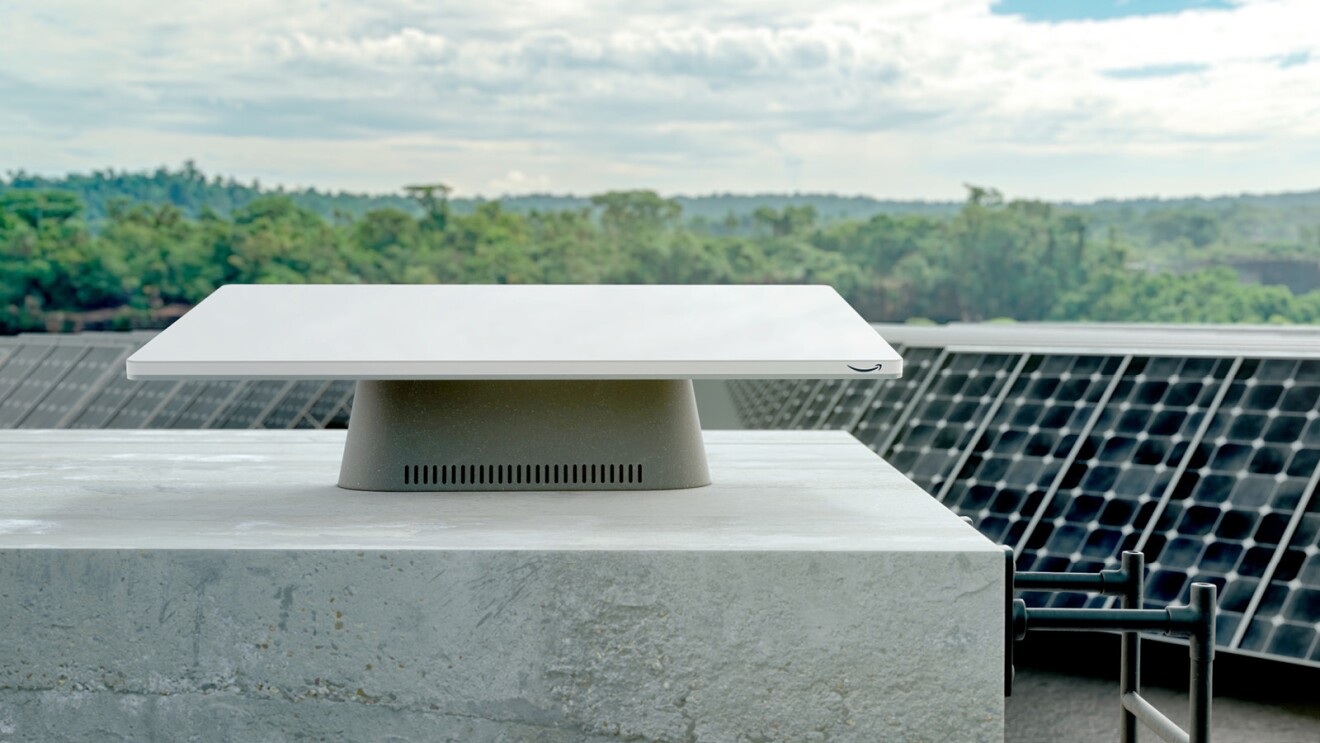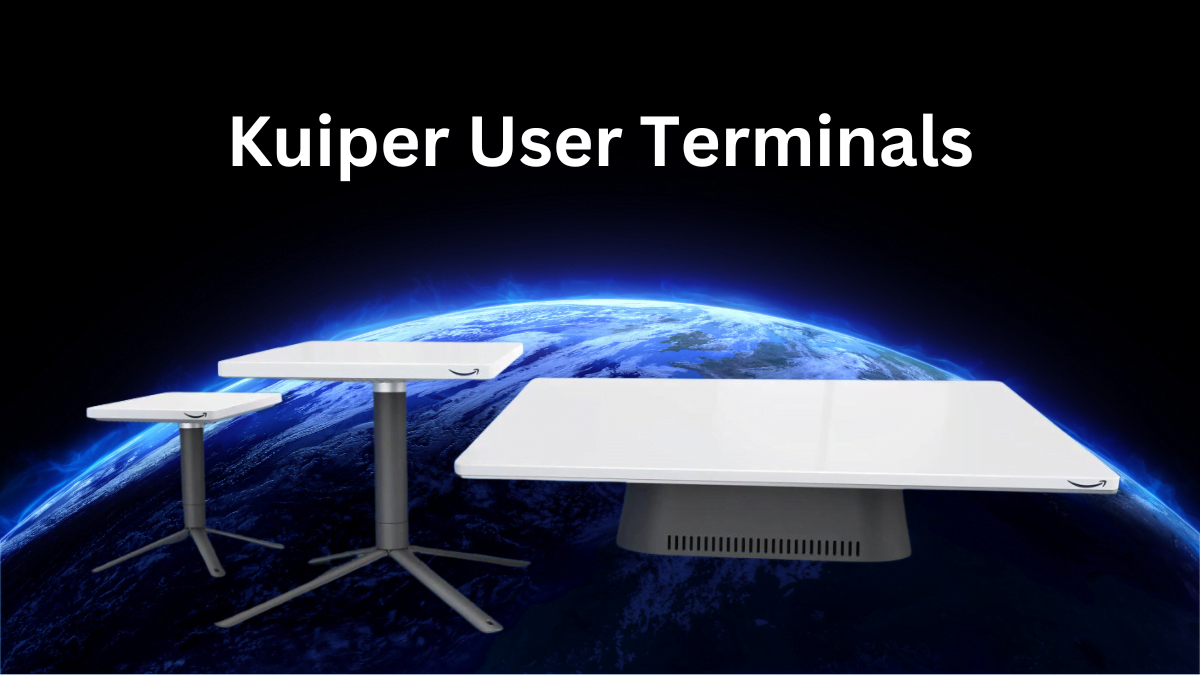- Project Kuiper shows off consumer hardware and promises to deliver service in 2024
- To Low Earth Orbit and low latency: Connectivity for All
- The Kuiper antennas and custom chipsets
- The Three Terminals to keep your Eye on
- Is this the satellite service to keep an eye on?
- Will this service be my best bet for home internet?
Project Kuiper shows off consumer hardware and promises to deliver service in 2024
Amazon’s Project Kuiper Satellite Customer Terminals is making headlines. The company recently revealed its plans to offer satellite internet services by 2024, with speeds ranging from 400mbps to 1gbps. Along with this, Amazon also showcased its consumer hardware, which includes a sleek and compact user terminal designed to connect to the satellites. This move puts Amazon in direct competition with other satellite internet providers such as SpaceX’s Starlink and OneWeb. It’s clear that Project Kuiper is ready to revolutionize the way we connect to the internet, especially in areas where traditional broadband is unavailable or unreliable. In this article, we’ll take a closer look at Project Kuiper’s plans and what it could mean for the future of satellite internet.
To Low Earth Orbit and low latency: Connectivity for All
Covering everyone on earth with internet is an ambitious goal to provide broadband connectivity to unserved and underserved communities worldwide. One potential solution is using low earth orbit satellites such as Project Kuiper. These satellites will be positioned closer to the earth, making it easier and less expensive to provide internet access to remote or rural areas. This technology has been proven to bridge the digital divide and provide better access to education, healthcare, and economic opportunities for communities worldwide. However, there are still challenges to overcome, such as affordability and accessibility for low-income and remote communities. Nevertheless, the potential benefits of bringing connectivity to all cannot be overstated.
This is why companies such as Facebook created project loon (which failed) to capture this potential market. Where Facebook stumbled, Starlink and now Kuiper plan to succeed. As each company has been building up its satellite network, with Starlink in the thousands and Kuiper at about 600 up in the sky. But all the capability means little if the service is too expensive and over capacity. Something that Starlink has repeatedly experienced with its constellation. If Amazon plans to deliver the speed, it promises with its standard terminal to residential and small business customers. It will have a winner on its hands.
The Kuiper antennas and custom chipsets
Kuiper is banking on using the same phased antenna array as other satellite broadband customers. The phased array antenna uses complex mathematics and a setup of mini transmitters and receivers to beam form digitally its antenna to track the satellites flying overhead. Amazon was quite pleased with how much capacity its first two prototype satellites could deliver to their test terminals. Refining on the methodology, they created their own version of the phased array antenna.

Amazon fused the Receive and Transmission antenna portions together, allowing for a smaller design while retaining the same performance. Although smaller terminals have less capacity, they do not expect to be hit with a performance penalty or need much aiming as with its square design, according to amazon, they can still provide the speed they are advertising with only an 11″ square terminal.

Not to be left behind on the microchip front, the president of technology for project Kuiper stated that amazon’s in-house baseband chip puts the processing power of a 5g modem with the capability of base-band chips into each one of their terminals. This chip, code-named Prometheus, is expected to handle traffic from thousands of customers simultaneously.
The Three Terminals to keep your Eye on
| Amazon Kuiper Terminals | Size | Weight | Speed | Portability | In-Motion-Use |
| Ultra Compact Terminal | 7 inches square | 1 Pound | 100 Mbps max | yes | no |
| Home Terminal | 11 inches square | 5 pounds | 400 Mbps max | unknown | no |
| Business Terminal | 19 inches x 30 inches | over 5 pounds | 1Gbps | No | no |
With the expected service to launch in the first half of 2024, it’s a good time for amazon to start providing details of its service. Segmenting its market into expected customer bases, Amazon plans to launch three different terminals. Kicking things off with the first terminal, which showcases a 7 inches square design and is able to fit into a backpack when out on the go. They will offer speeds with this terminal up to 100 Mbps. The ultra-compact terminal looks to be the most portable of the three. Although Amazon hasn’t mentioned it, the price looks to be the most affordable of their lineup.

Next up is the home customer terminal which at its widest is only 11 inches square and is ideal for a set it and forget it setup. With no need to aim the antenna, it does not require expensive motors, reducing costs. Expected to deliver speeds up to 400 megabits per second it is targeted at home consumers. No details on portability yet, but as 2023 comes to an end, more details will be forthcoming.

The third terminal is targeted at businesses and will provide expected speeds up to 1gbps. It’s by far the largest with its dimensions clocking in at 19 by 30 inches.

Is this the satellite service to keep an eye on?
The launch of Kuiper, Amazon’s planned satellite service, has captured the attention of many tech enthusiasts. With its ambitious plan to launch thousands of low-earth orbit satellites to provide high-speed internet access to underserved areas, Kuiper is definitely a service to keep an eye on. Moreover, as competition drives down prices, this could lead to Kuiper offering an affordable alternative to existing satellite services. And with Amazon’s history of bundling benefits with its existing subscriptions, it’s possible that Kuiper subscribers could also see benefits in their Amazon Prime subscriptions or other services. All in all, the prospect of Kuiper’s launch is definitely one to watch in the coming years as it reshapes the satellite industry.
Will this service be my best bet for home internet?
Deciding on the best option for home internet can be a daunting task, but there are a few factors to consider when making this important choice. For those in rural areas where traditional broadband services may not be available, satellite internet may be a viable option. However, if you live in an urban area, 5G Home Internet might be the best bet. It’s important to take into consideration what your needs are for internet service. From streaming to gaming and video conferencing, it’s important to choose an internet service that can meet all of your needs without interruption. Before making a final decision, it may be useful to conduct research on different internet services, read reviews, and compare speeds and costs to determine the best option for you. If you need a comprehensive list of 5G home internet providers check out our article.
